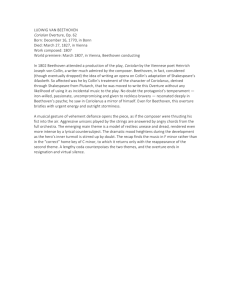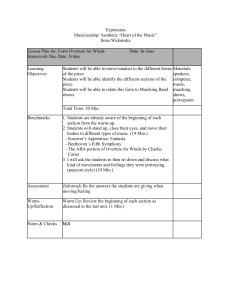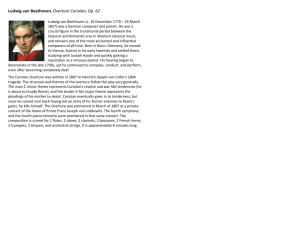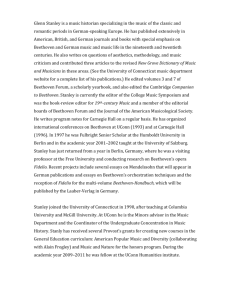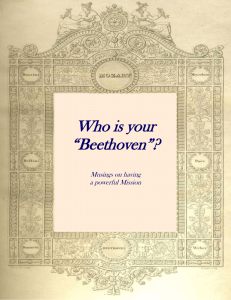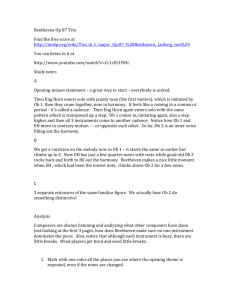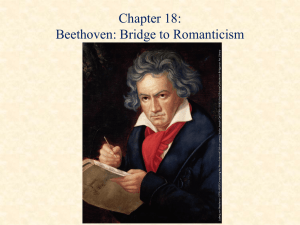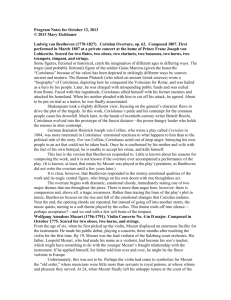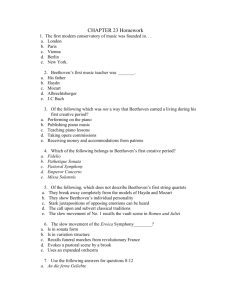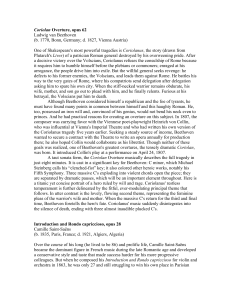Ludwig van Beethoven (1770-1827) Coriolan Overture, Opus 62
advertisement
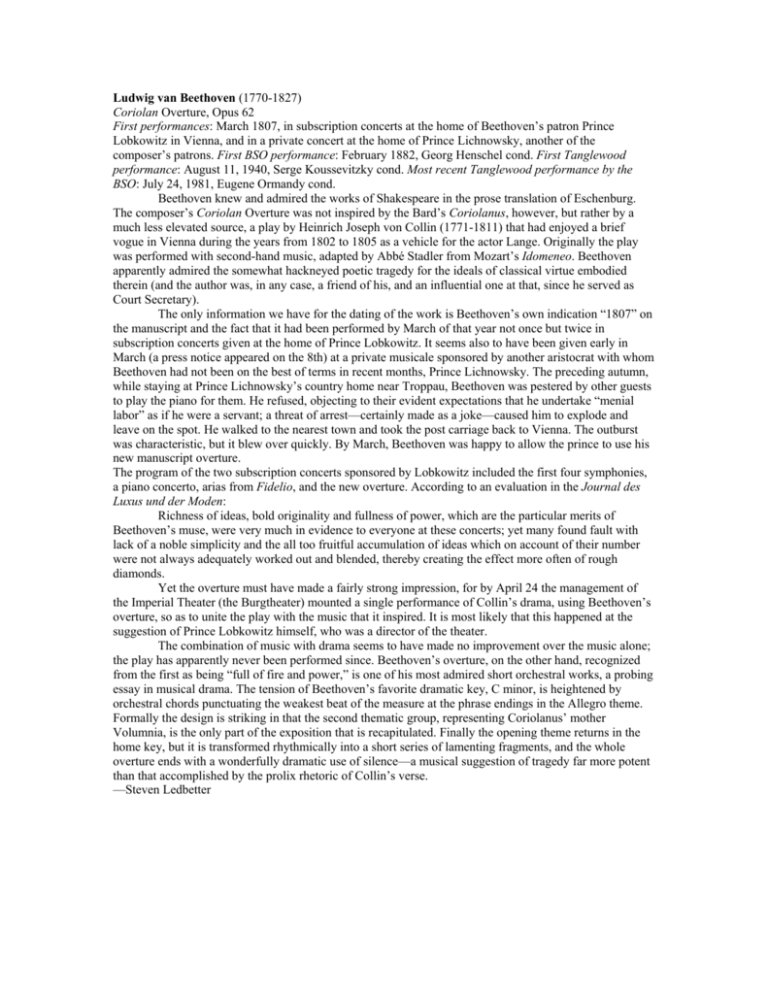
Ludwig van Beethoven (1770-1827) Coriolan Overture, Opus 62 First performances: March 1807, in subscription concerts at the home of Beethoven’s patron Prince Lobkowitz in Vienna, and in a private concert at the home of Prince Lichnowsky, another of the composer’s patrons. First BSO performance: February 1882, Georg Henschel cond. First Tanglewood performance: August 11, 1940, Serge Koussevitzky cond. Most recent Tanglewood performance by the BSO: July 24, 1981, Eugene Ormandy cond. Beethoven knew and admired the works of Shakespeare in the prose translation of Eschenburg. The composer’s Coriolan Overture was not inspired by the Bard’s Coriolanus, however, but rather by a much less elevated source, a play by Heinrich Joseph von Collin (1771-1811) that had enjoyed a brief vogue in Vienna during the years from 1802 to 1805 as a vehicle for the actor Lange. Originally the play was performed with second-hand music, adapted by Abbé Stadler from Mozart’s Idomeneo. Beethoven apparently admired the somewhat hackneyed poetic tragedy for the ideals of classical virtue embodied therein (and the author was, in any case, a friend of his, and an influential one at that, since he served as Court Secretary). The only information we have for the dating of the work is Beethoven’s own indication “1807” on the manuscript and the fact that it had been performed by March of that year not once but twice in subscription concerts given at the home of Prince Lobkowitz. It seems also to have been given early in March (a press notice appeared on the 8th) at a private musicale sponsored by another aristocrat with whom Beethoven had not been on the best of terms in recent months, Prince Lichnowsky. The preceding autumn, while staying at Prince Lichnowsky’s country home near Troppau, Beethoven was pestered by other guests to play the piano for them. He refused, objecting to their evident expectations that he undertake “menial labor” as if he were a servant; a threat of arrest—certainly made as a joke—caused him to explode and leave on the spot. He walked to the nearest town and took the post carriage back to Vienna. The outburst was characteristic, but it blew over quickly. By March, Beethoven was happy to allow the prince to use his new manuscript overture. The program of the two subscription concerts sponsored by Lobkowitz included the first four symphonies, a piano concerto, arias from Fidelio, and the new overture. According to an evaluation in the Journal des Luxus und der Moden: Richness of ideas, bold originality and fullness of power, which are the particular merits of Beethoven’s muse, were very much in evidence to everyone at these concerts; yet many found fault with lack of a noble simplicity and the all too fruitful accumulation of ideas which on account of their number were not always adequately worked out and blended, thereby creating the effect more often of rough diamonds. Yet the overture must have made a fairly strong impression, for by April 24 the management of the Imperial Theater (the Burgtheater) mounted a single performance of Collin’s drama, using Beethoven’s overture, so as to unite the play with the music that it inspired. It is most likely that this happened at the suggestion of Prince Lobkowitz himself, who was a director of the theater. The combination of music with drama seems to have made no improvement over the music alone; the play has apparently never been performed since. Beethoven’s overture, on the other hand, recognized from the first as being “full of fire and power,” is one of his most admired short orchestral works, a probing essay in musical drama. The tension of Beethoven’s favorite dramatic key, C minor, is heightened by orchestral chords punctuating the weakest beat of the measure at the phrase endings in the Allegro theme. Formally the design is striking in that the second thematic group, representing Coriolanus’ mother Volumnia, is the only part of the exposition that is recapitulated. Finally the opening theme returns in the home key, but it is transformed rhythmically into a short series of lamenting fragments, and the whole overture ends with a wonderfully dramatic use of silence—a musical suggestion of tragedy far more potent than that accomplished by the prolix rhetoric of Collin’s verse. —Steven Ledbetter
